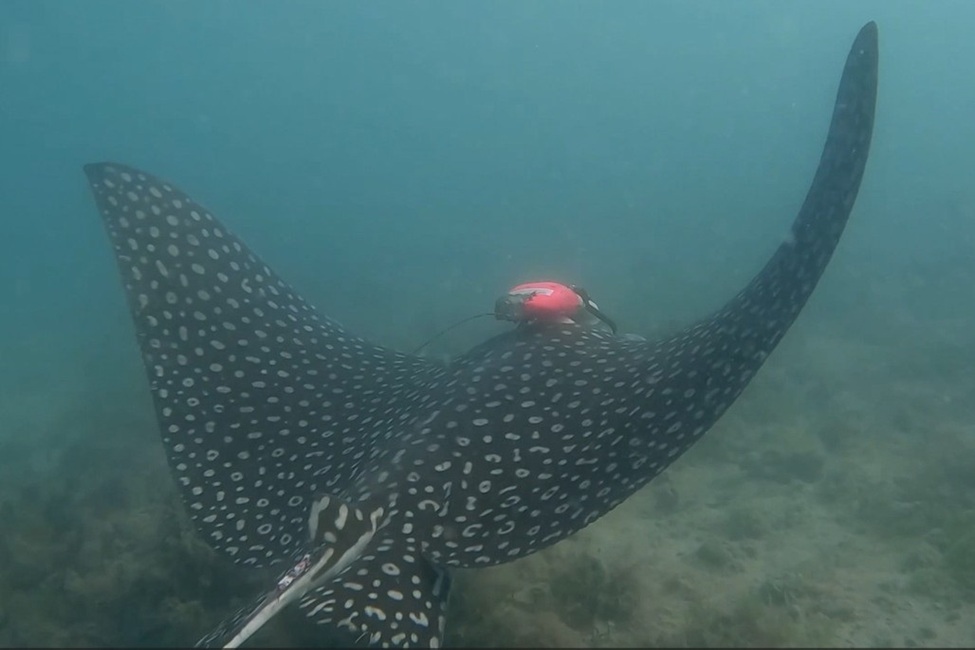“These animals are powerful, fast-moving, and live on dynamic high-energy environments, which makes tagging them a real challenge,” said Matt Ajemian, Ph.D, senior author and an associate research professor and director of the Fisheries Ecology and Conservation Lab (FEC) at FAU Harbor Branch. “Our goal was to create a system that could be applied in seconds, stay on during natural behaviours, and collect rich, multi-dimensional data.
“We’re now able to observe not just where these rays go, but how they feed, how they move through their habitats, and how they interact with other species – insights that were virtually impossible to capture before.”
The custom-built tag integrates motion sensor, video camera, underwater microphone, satellite transmitter, and acoustic tracker with a fast ‘minimally-invasive attachment system’ that makes use of silicone suction cups and specially designed straps secured near the ray’s spiracles.
It’s a design that could just mark a turning point in the study of elusive marine species such as pelagic rays.
“We’ve shown that complex behaviours – like the crunching of clams – can be identified using sound and movement data alone, even without video. This opens up exciting possibilities for long-term ecological monitoring using simpler, more efficient tags,” said Cecilia M Hampton, corresponding author and Ph.D student in the FEC lab at FAU Harbor Branch.
“It’s not just about observing feeding – we’re beginning to map out entire behavioural landscapes, from foraging strategies to social dynamics. These insights are vital for understanding how rays respond to environmental change and how best to protect them.”
Looking ahead, the researchers say their tagging system could be adapted to other ray species, with slight modifications to account for differences in body size and spiracle shape.
“As biologging technologies advance, combining data streams like movement, sound, and video – and applying machine learning for behavioural classification – could turn rays into mobile surveyors of ocean health and benthic habitats,” said Ajemian.
Click here for more from the Oceanographic Newsroom.
